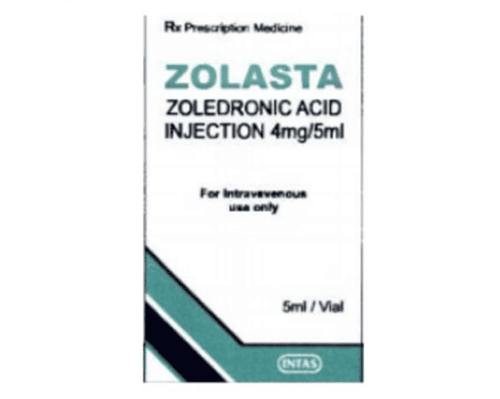This is an automatically translated article.
Bone cancers are rare malignancies of bone origin with primitive mesenchymal cells. This is a very aggressive malignancy and usually presents in childhood, requiring prompt diagnosis and treatment under the care of a specialized bone cancer center. Knowing how bone cancer manifests itself, especially in children, will greatly help in the prognosis of the disease later in life.
1. What is bone cancer?
Bone cancer in general or primary bone cancer in particular is a rare malignancy of bone, originating from primitive mesenchymal cells. This pathology accounts for about 0.2% of all malignancies worldwide and is idiopathic in most cases.
Bone cancers are divided into several subtypes, with osteosarcoma, chondrosarcoma and Ewing's sarcoma, being the most common. Each type differs in characteristics, appearance, and treatment possibilities. Regardless of the type, however, bone cancer cells are often aggressive and require early diagnosis, using imaging and tissue biopsy for diagnosis. Thereafter, surgical excision remains the mainstay of treatment, with chemotherapy and radiation often used in combination.
2. How does bone cancer manifest?
Primary bone cancer is a rare diagnosis. Early diagnosis of bone cancer can help improve overall survival. However, delays are still common. History and physical examination are the first steps in making a diagnosis at a specialist oncology center.
Pain is the most common symptom of bone cancer, described as a dull, deep ache that progresses over time, often becoming difficult to relieve with conventional medications. Pain can interfere with sleep at night and is always a warning sign of bone cancer in children. In addition, if the bone tumor is close to the skin, it may be palpable with localized pain.
Pathological fractures may be the first sign and any unusual fracture requires further investigation. In addition, the patient may present with signs of systemic illness, including lethargy, coma, malaise, and fever. A history of predisposed genetic conditions (Li-Fraumeni syndrome, hereditary retinoblastoma, Werner syndrome, and Rothmund-Thomson syndrome) or diseases (Paget's disease) is important if detected symptoms of bone cancer.
Clinical examination should focus on the painful area or tumor. The site should be examined and palpated, with size, consistency, mobility, location of mass, and skin changes noted. Lymph nodes should be palpated to evaluate for symptoms of metastatic bone cancer.
3. Manifestations of bone cancer on diagnostic means
Diagnostic facilities used in primary bone cancer include imaging, laboratory blood tests, and tissue biopsies.
3.1 Radiography:
All patients should have an X-ray when a potential bone cancer symptom is identified. In these cases, radiographs can often reveal the following findings:
Osteoarthritis, degenerative joint disease, or mixed changes. Crumpled appearance, suggestive of bone destruction secondary to a rapidly expanding tumor in bone, commonly seen in Ewing's sarcoma and osteosarcoma Permeable appearance, indicating tumor progression through bone, with an area of no differentiate between tumor and healthy bone, commonly seen in small cell tumors, including Ewing's sarcoma. “Onion skinning,” with a partially formed periosteal-elevating tumor, is commonly seen in Ewing's sarcoma. Magnetic Influence (MRI):
MRI remains the gold standard for local tumor extent. The entire anatomical cavity should be imaged with MRI sensitive to bone and soft tissue lesions. Therefore, biopsy planning is very important and MRI allows the identification of neural circuit structures.Modern techniques, including dynamic MRI, allow better characterization of areas of acute tumor.
Computed tomography (CT):
CT scans are used when the diagnosis is still unclear after an MRI or when imaging is contraindicated. MRI This is still the modality of choice in primary pelvic bone cancer and for planning reconstructive surgery
Patients with confirmed primary bone cancer n requires staging, and although many centers still perform chest radiographs, chest CT is the gold standard for evaluating bone cancer with lung metastases.
Whole body bone scan:
Whole body bone scan is a nuclear medicine study that uses Technetium-99m as an active agent, highlighting active areas of osteoblasts. Imaging will enable detection of malignancy and be useful in diagnosing metastatic disease.
Positron emission tomography (PET):
PET scan is a nuclear medicine study that uses the high metabolic rate of tumor cells, measuring the absorption of F-18 fluoro-deoxy- Radiolabeled glucose (FDG) is injected. PET scans are available at several centers for the initial staging of primary bone cancers, and studies have suggested this imaging as a follow-up modality when used in conjunction with CT.
Blood tests:
Specific blood tests in the laboratory are not used to determine how bone cancer is present. However, these are basic tests in every patient. Especially in patients undergoing chemotherapy, baseline tests for urea, creatinine, and liver function allow a rough assessment of liver and kidney function.
In addition, the biochemical markers alkaline phosphatase (ALP) and lactate dehydrogenase (LDH) provide some predictive value and concentrations can be monitored during treatment to assess the likelihood of disease recurrence. .
Tissue biopsy:
Biopsy of the lesion is a necessary step to confirm the diagnosis of bone cancer, allowing histopathological assessment and tumor classification. Biopsy should be done along with surgery, ideally in a specialized bone cancer center.
Prior to implementation, the doctor will need to meticulously plan for optimal biopsy manipulation, orienting to definitive surgical treatment options. Imaging tools should be fully implemented prior to biopsy, to know how bone cancer presents to aid in planning access and preventing metastasis.
In summary, people with bone cancer may experience one or more of the symptoms listed above. Early bone cancer symptoms are changes you may feel in your body. After that, the examination will help the doctor navigate and look for how the bone cancer presents on diagnostic tools such as imaging, biopsies, and blood tests. If bone cancer is diagnosed early, especially as soon as parents detect bone cancer in children, the treatment process will be better, improving the prognosis in the future.
Early cancer screening is considered a perfect measure in the timely detection and treatment of all types of cancer. Reduce the cost of treatment and especially reduce the mortality rate in patients. Vinmec International General Hospital always deploys and introduces to customers Early cancer screening at Vinmec - Peace of mind to live well to help with gene testing, imaging diagnostics, testing of biological markers to detect tumors Soon. Vinmec International General Hospital has many packages of early cancer screening.
Only one gene test can assess the risk of 16 common cancers in both men and women (lung cancer, colorectal cancer, breast cancer, pancreatic cancer, bone cancer) , cervical cancer , stomach cancer , prostate cancer ,....) Early detection of early signs of cancer through imaging, endoscopy and ultrasound. The operation is simple, careful and accurate. A team of well-trained specialists, especially in oncology, are capable of handling cancer cases. With facilities, advanced and modern medical equipment and a team of doctors with deep expertise and experience. At Vinmec, the examination process becomes fast with accurate results, saving costs and time for patients.
Please dial HOTLINE for more information or register for an appointment HERE. Download MyVinmec app to make appointments faster and to manage your bookings easily.













